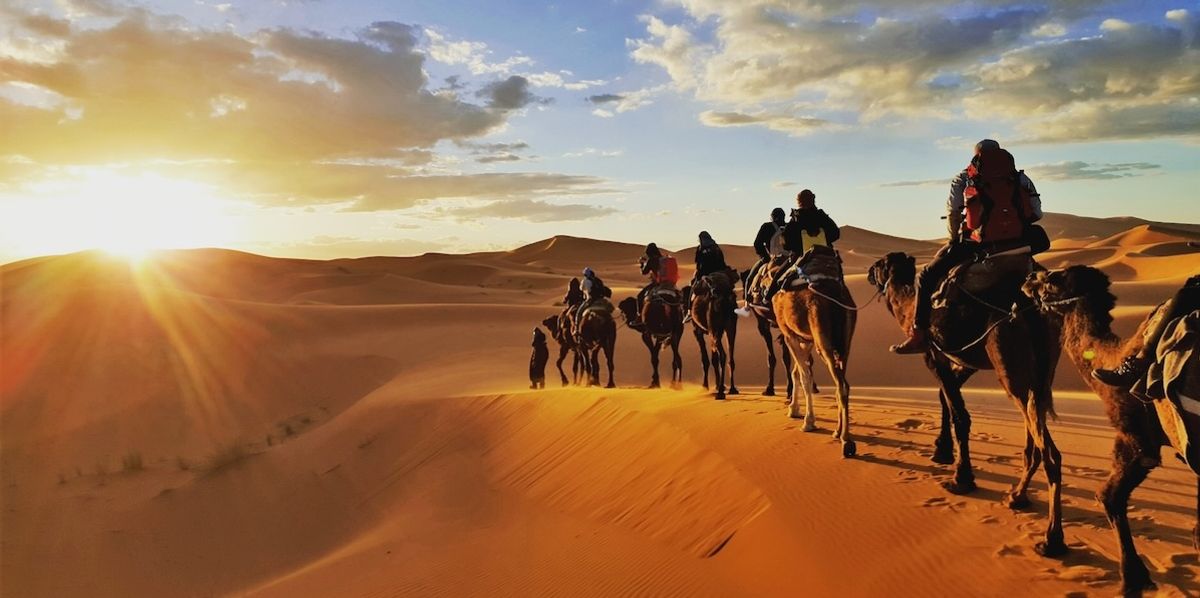The travel industry — like many others — is in the midst of the buzz and technological fervor surrounding artificial intelligence. For instance, Airbnb is using it to prevent guests from thrashing hosts’ properties, and Four Seasons has implemented it to make its concierge service even fancier. The transformative impact of AI on tourism is undeniable.
There are also cases when AI is helping make travel more sustainable. However, there are limits to what AI can do, and delegating our responsibility for solving sustainability issues to AI simply doesn’t cut it.
To genuinely make our industry more sustainable, we need to start, as humans, behaving consciously and responsibly, and educating other people so that they can do so too.
We need to dig deeper into AI’s capabilities — and determine whether it can fully help the industry make an effective sustainable transition or if, in some cases, it is mostly wishful thinking.
AI determined high and low seasonality patterns
AI is capable of processing and analyzing huge amounts of data, and this helps implement sustainable solutions in travel.
For instance, our team created a heat map that illustrates the “tourism load” in every country, highlighting where our travelers visit the most. AI helped us identify the most popular routes and determine high and low seasonality patterns.
Subscribe to our newsletter below
Then we worked with our travel experts to offer packages to popular spots during the low season and redistributed the visitor load to prevent overcrowding. This was a win-win, with customers also benefiting from lower prices and the chance to explore new places.
There’s more that can be done. A prominent issue the sector is facing is that travelers don’t know how to find sustainable travel options. The 2022 Sustainable Travel Report — conducted by Booking.com — reveals that 29% of responding travelers faced this problem, and 31% of travelers admitted they didn’t even know that these types of properties existed.
To solve this, travel advisors can integrate AI to identify and promote sustainable travel options and responsible tour operators. Further recommendations — and validation — can be obtained by utilizing AI to go through online reviews, social media posts and other sources, making sustainable travel options more visible to the average traveler.
Tourists will never install toilets or trash bins
The potential benefits of AI sound wonderful, yet to succeed we need to look beyond data analysis and visualizations and get to the root of the problem.
Let’s consider a simple example. A traveler is hiking in the Sahara Desert, a place with no toilets or trash cans, and they leave their waste somewhere on the route. Sure, an AI-powered surveillance camera can be put in place to track offenders. But that, by itself, does not solve the problem — there is still waste somewhere on the route, and the place is being polluted.
This demonstrates the lack of awareness and responsibility on behalf of the people in charge of maintaining the path; in this case, the government. Tourists will never install their own toilets or trash bins. This needs to be done by local authorities. It also illustrates the main point, which is that these problems need to be solved by humans, not AI.
Ideal scenario: Humans and tech working together
AI-powered algorithms are great at certain things, like optimizing travel routes and itineraries, boosting the return on investment of a marketing campaign and customizing certain experiences to the particular needs and preferences of travelers.
This means the next time you’re planning on admiring the beauty of the Aegean Sea, your cruise might be utilizing an AI-driven energy management system to optimize its fuel consumption and reduce its carbon emissions.
Here’s another example. The new versions of both Google Maps and Search can chart the most earth-friendly path for our trip, including the best route to charge our electric vehicle or the most walkable option.
Yet there are so many marvelous destinations worldwide that still rely on local manual labor and community activities that are off the beaten path. Let’s say you’re visiting the coffee trail in Colombia. Most of the activities you will get immersed in, such as connecting with local farmers and picking your own coffee beans, are operated by locals — and AI might have zero information about these undiscovered gems.
Sure, tech solutions could be great to help these grassroots organizations reach more visitors, make their operations more efficient and so on, but the human touch is still needed. To make these experiences happen, travel advisors need to work together with local operators, ensuring that technology enhances rather than replaces the enriching experiences that define symbiotic tourism.
There are more benefits to this approach. Integrating travelers into the fabric of local culture and heritage cultivates a deeper appreciation for the destinations they travel to. This results in them taking better care of the place and instills a sense of responsibility, something much needed for sustainable travel.
Ensuring fair profit distribution, local revenue reach
There is no question that AI has impressive capabilities, and that it can help the tourism industry become more sustainable.
However, by themselves, they are not enough. To truly help the travel sector evolve, the human touch is required, as well as the collective efforts of individuals, communities and governments.
As stakeholders of the travel sector, we need to be proactive about ensuring profits are distributed fairly and that revenues can reach the local communities. We also need to educate travelers and instill in them a sense of responsibility, starting by helping them immerse in any community they visit and connecting them with locals.
By embracing our responsibility in making travel sustainable, we can preserve the wonders of the world, and ensure future generations can enjoy them.
About the author …










